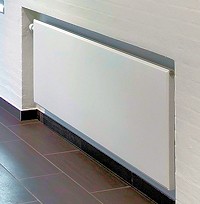Managing your heating system and keeping it at maximum efficiency requires a simple but effective process… You just need to bleed your radiators on a regular basis. This is far easier than it sounds, all you require is a radiator key and a small container for water.
Sometimes the bottom portion of your radiator is warm while the top portion is cold or circulation around system is inconsistent. One likely explanation is air trapped inside one of your radiators and this prevents it from working properly. It could have a knock on effect and disrupt the whole system. Primarily the trapped air, whether partial or complete, stops the radiator heating up and doesn’t produce the required output.
To start with the central heating system must be turned off. You’ll need to have a bleed key to bleed a radiator (these can be obtained from Simply Radiators). Generally the bleed valve or vent is positioned at the top of the radiator and has a little square screw. Insert the bleed key into the bleed valve and turn it counter clockwise. Don’t turn it too much; a half a turn is usually enough.
As you turn the radiator key, the valve will open and you will hear a hissing sound. This is completely normal and is simply caused by the air escaping. Once water begins to leak out of the radiator, it is time to close the valve. To do so, turn the bleed key clockwise for half a turn. You can then move on to the next radiator that needs to be bled before turning your central heating radiator system back on.
When you bleed a radiator, keep a container and rag handy to catch the water that drips down. If you have a sealed heating system, be sure to do a pressure check and add water if needed. Once you’ve done so, you are finished and may turn your heating system back on. Store your bleed key until the next time you need it.

